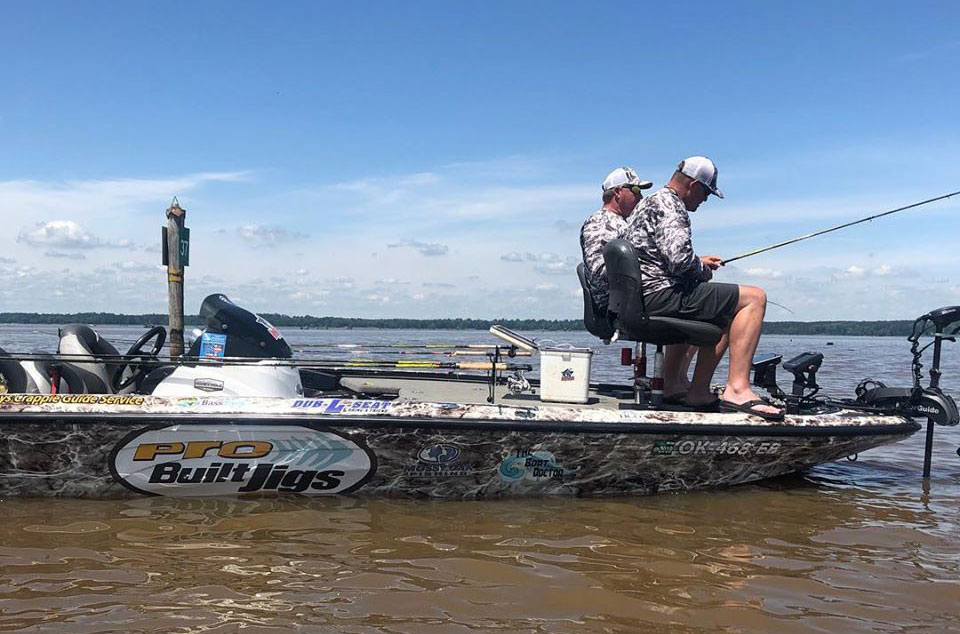provided by John E. Phillips
What if you could catch crappie that weighed 1-1/2 pounds or better most every time you went fishing? What if you didn’t have to spider rig with four poles per person and only used one pole to catch the biggest crappie in a lake? What if you could use your depth finder to pinpoint the biggest crappie, follow it until the fish stopped and then put your bait right on the crappie’s nose? What if you could tell the difference between a crappie’s head and tail before you ever released your bait? This new technology is some of what has been introduced to the crappie-fishing world recently. Two anglers are forging a new path that other crappie fishermen surely will follow.

The American Crappie Trail National Championship allowed the Youngs to fish from 6 a.m. until 2 p.m. each day. There were 100 teams competing in this tournament, and after the first day, only half advanced to the second day.
Ryan Young explained that at the end of the first day, they were in 5th place. The second day, they were in 2nd place, and on the final day of the tournament, they caught their seven biggest fish and won the tournament. “Prior to this tournament, I’d only been on Sardis Lake for one day in the wintertime,” said Young. “Then we were given five days to practice before the competition started.”
Side scanning will allow you to see crappie or shad in an area and also will show you if the fish are holding on trees or stumps. But by using the LiveScope, Ryan and Darin Young could see where crappie were holding in comparison to the trees more vividly.
“During the summer months, on Lake Eufaula in Oklahoma where we live, the crappie would be holding down in deep cover,” said Ryan Young. “However, the big crappie we found on Lake Sardis were coming off the spawn, looking for something to eat instead. Since a 14-inch crappie in Lake Sardis could weigh up to 1.6 pounds, we did almost everything we could to catch one. I set up my LiveScope, so I could see 50 feet around the entire boat. Even at that distance, I could tell whether a crappie weighed either 1 or 2 pounds.
“In this tournament, we determined the size of every fish before we caught it. Sometimes, we could decide how big a crappie was by the way it behaved, and other times we could tell by the way the crappie ate the bait. A small crappie would come up to a hair jig and plow right through it, sucking the bait in as it swam into it. The bigger crappie often would come up to the bait, stop and look at it. Crappie usually attacked minnows aggressively. On the other hand, if you were fishing a jig, the crappie might come up, turn vertical and eat the jig, coming down on the bait.”
The only attractant they used was waxworms on their jig hooks when they were fishing around wood. Ryan shared that they learned from longtime crappiers Ronnie Capps and Steve Coleman that if you have trouble catching a big crappie holding on a stump, then sometimes a waxworm could cause the crappie to take the jig. Capps and Coleman have won 9 national crappie championships.
If you’d like to learn more about the LiveScope or fish with Ryan Young or see the size of fish he’s catching, you can go to his Facebook page at Eufaula Boy’s Crappie Guide Service, or email him.






























